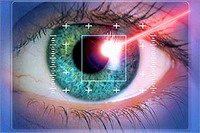US biometric technology program to be expanded
America will expand a test program that used advanced biometrics technology to identify hundreds of migrants attempting to make the dangerous ocean crossing between the Dominican Republic and Puerto Rico.

The "biometrics-at-sea" program used since November 2006 in the Mona Pass has helped reduce illegal migration there by 50 percent and will be used by U.S. Coast Guard vessels operating out of South Florida in spring 2008, said Coast Guard Rear Adm. Wayne Justice. He said the estimated number of migrants attempting to reach U.S. soil through the Mona Pass has dropped year to year from about 10,000 to about 5,000.
"We've gotten the concept down in the Mona Pass," Justice said at a news conference. "We're taking a measured approach to expansion."
The program allows Coast Guard personnel, using a handheld device, to take digital fingerprints and photographs at sea of migrants and smugglers they intercept. The data is e-mailed via satellite link to a Homeland Security Department database near Washington, D.C., and results are back to the vessel within 3 to 5 minutes, officials said.
The database of some 3.2 million names is maintained under Homeland Security's US-VISIT program, which stands for Visitor and Immigration Status Indicator Technology. Its director, Robert Mocny, said the database allows the Coast Guard to quickly check migrants for such things as previous deportation orders or criminal warrants.
Those who do not match any names become enrolled in the database, Mocny said.
"These people were trying to hide behind a cloak of anonymity," he said. "We know biometrics is the wave of the future as far as identification."
Officials said that in conjunction with the biometrics program, stepped-up patrols, an aggressive public deterrence campaign in the Dominican Republic and improved intelligence are keys to the reduction.
Subscribe to Pravda.Ru Telegram channel, Facebook, RSS!


